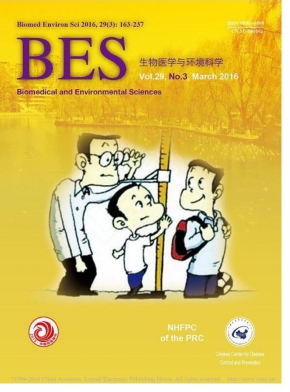Dynamics of Rodent and Rodent-borne Disease during Construction of the Three Gorges Reservoir from 1997 to 2012
doi: 10.3967/bes2016.024
-
Key words:
- Three Gorges reservoir /
- Rodent density /
- Rodent-borne diseases
Abstract: Objective To investigate the impact of impoundment and active public health interventions on rodent populations and rodent-borne diseases in the Three Gorges reservoir region from 1997 to 2012. Methods Surveillance data from 1997 to 2012 were extracted from the Public Health Surveillance System of The Three Gorges established in 1997. Temporal changes in the incidences of hemorrhagic fever with renal syndrome (HFRS) and leptospirosis, rodent density, pathogen-carrying rates, and their correlations were analyzed. ResultsThe average indoor and outdoor rodent densities decreased overall from 1997 to 2012. The average densities decreased by 47.72% (from 4.38% to 2.29%) and 39.68% (from 4.41% to 2.66%), respectively, after impoundment (2003-2012) compared with before impoundment (1997-2002). The average annual incidence rates of HFRS and leptospirosis were 0.29/100,000 and 0.52/100,000, respectively, and decreased by 85.74% (from 0.68/100,000 to 0.10/100,000) and 95.73% (from 1.47/100,000 to 0.065/100,000), respectively, after impoundment compared with before impoundment. Incidences of HFRS and leptospirosis appear to be positively correlated with rodent density in the reservoir area. Conclusion This study demonstrated that rodent density and incidences of rodent-borne diseases decreased and were maintained at low levels during construction of the Three Gorges dam. Measures that reduce rodent population densities could be effective in controlling rodent-borne diseases during large-scale hydraulic engineering construction.
| Citation: | CHANG Zhao Rui, LU Liang, MAO De Qiang, PAN Hui Ming, FENG Lian Gui, YANG Xiao Bing, LIU Feng Feng. Dynamics of Rodent and Rodent-borne Disease during Construction of the Three Gorges Reservoir from 1997 to 2012[J]. Biomedical and Environmental Sciences, 2016, 29(3): 197-204. doi: 10.3967/bes2016.024 |







 Quick Links
Quick Links
 DownLoad:
DownLoad: